
Fractionation is the separation of plasma proteins by influencing their solubility. By changing the ethanol concentration, pH-value and temperature, different proteins are separated at different settings.
Here in Springe we manufacture intermediate pastes: cryoprecipitate, and pastes I + II + III, paste II & paste V. The term intermediate refers to the fact that we do not manufacture the end product at this site (with the exception of paste V to albunorm®), but rather the intermediates which are further processed into finished products at other production sites.
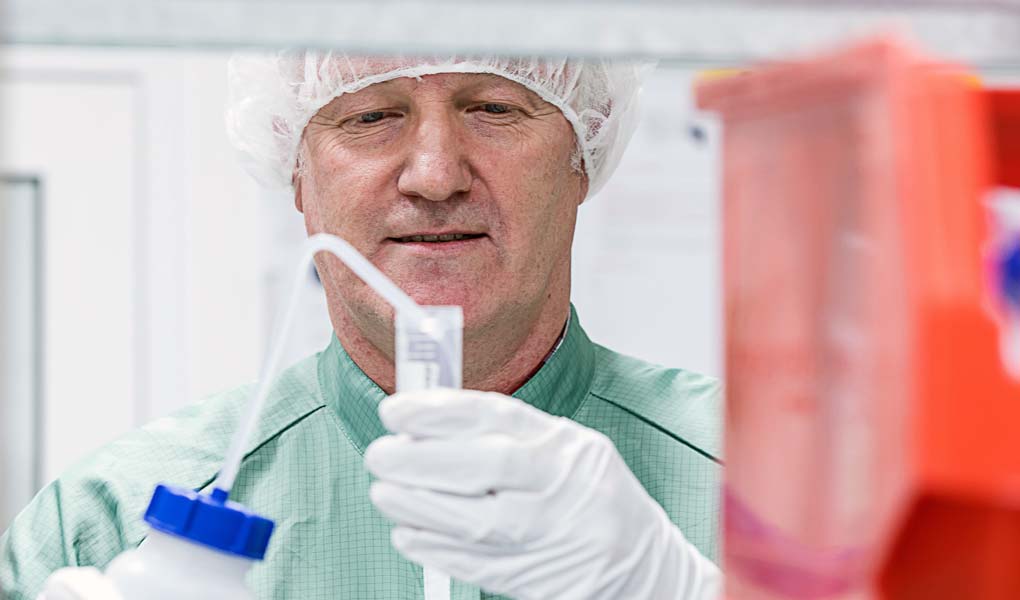
In-process control: pH measurement.
We work 365 days a year, 24 hours around the clock. There are 100 fractionation employees in Springe, working in nine shift groups. The early shift starts at 6am, the late shift at 2pm, and the night shift at 10pm. There is no such thing as a typical working day. I start around 7.30am, the production team starts with our “pulse” meeting which department heads, foremen, and various process operators attend and discuss what happened during the night shift.
The material we are working with is very precious. If some part of the paste is contaminated, it can no longer be utilised and must be discarded. It doesn’t matter in which part of the process you work, whether we are cleaning, paste-harvesting, producing or pooling, if something goes wrong somewhere it is always very expensive.
We currently have three plasma poolings per day. A pool contains between 1,630kg and 1,770kg of plasma. On average that corresponds to 1,662 litres. We need between 2,000 and 6,000 individual donations for one pool (depending on the type of donation – source or recovered). In one day, we process approximately 5,250kg of plasma at our site, which equates to 6,000 to 18,000 single donations.
I most enjoy cooperation with other departments, exchanging information, collaborating on joint projects and validation activities.
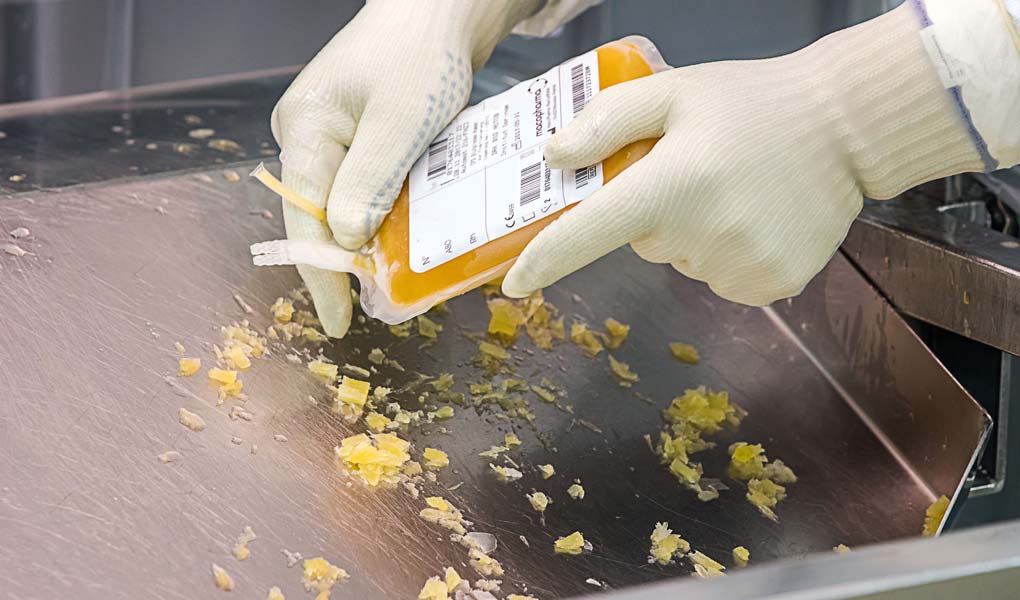
Pooling process – cutting of plasma bags.
If our plasma donors didn’t exist, we wouldn’t be here. We, as the producer, must, of course, maintain a consistently high standard in the manufacture of intermediates in order to make the product safe for the patient.
Hygiene is imperative and we operate in a clean room class D environment. To access the production area, every employee has to pass through a personnel lock, a process which includes disinfection. Special clean room clothing must be worn.
We have a manufacturing protocol for each process, which documents everything, additions, extractions and the process itself. For example, the addition of filter aids, salts, or buffer solutions, whether added manually or automatically, are always noted in the manufacturing protocols. Here four-eye (that is to say, two people) inspections are always stipulated in the manufacturing protocols. Four-eye inspections are stipulated for the process steps that are immensely important, where absolutely no errors should happen, otherwise there will be losses or deviations.
I enjoy the variety of my work. There is not much of a routine because there’s always something new going on. In my role, I prepare and review the manufacturing protocols, design and create standard operating procedures, train, guide, instruct and lead employees. There are times when there is a tight window, when something is changed, or a new project arises and you have to be able to react quickly, which is one of the things that I enjoy. In recent years, our automation standard has been increased a lot for the systems. What used to be done manually has now been partially or largely automated to increase efficiency. “Program 2019” aims to double production capacity while significantly increasing the overall efficiency of manufacturing operations. In recent years, we increased capacity from 1.2 to 1.8 million litres of plasma. This will further double to 3.5 million litres once our new fractionation department (Annexe B) is finished.
It is always nice to deal with other employees. I most enjoy cooperation with other departments, exchanging information, collaborating on joint projects and validation activities.
We also work a lot with operations support and the technical department, mainly about maintenance, repairs and scheduling when work can be performed on which systems. If there are any problems with the systems or the cleaning systems (malfunctions, pump failures etc.), the schedules have to be set accordingly with the technical department so that there is as little delay in the production process as possible.
Patients rely on us to ensure that what they receive is of consistently high quality. I enjoy being a part of improving the lives of seriously ill patients. People who get our products are very sick and if you can help them somehow, it’s a nice feeling.
Biochemical processes
to separate plasma
Fractionation is the separation of plasma proteins by
influencing their solubility. By changing the ethanol
concentration, pH-value and temperature, different proteins
are separated at different settings.
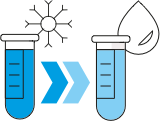
Thawing
The plasma is deep-frozen at -30° to -25°C. The cool rooms are warmed slowly up to -5°C to thaw the plasma. The plasma remains in the cool room for about 16 hours, then it is driven to pooling.


Pooling
There are three poolings per day.
A pool contains between 1,630kg and 1,770kg of plasma. On average, that corresponds to 1,662 litres.
Between 2,000 and 6,000 individual donations (depending on if the plasma was donated via plasmapheresis or as a whole blood donation) are needed for one pool.
In one day, approximately 5,250kg of plasma are processed, which equates to 6,000–18,000 single donations.

Mass capture after pooling
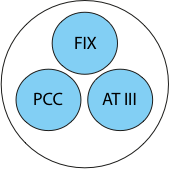
Factor IX
Prothrombin Complex Concentrate
Antithrombin III
Chromatography
The supernatant is pumped over the chromatography column to remove the factor XI and is subsequently transferred into a vessel for the next production step.
Cryoprecipitate
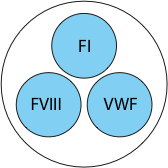
Fibrinogen
Factor VIII
Von Willebrand Factor
Centrifugation
The first intermediate product, i.e. the cryoprecipitate, is created by cold precipitation. The cryoprecipitate is harvested from the centrifuge. It’s a yellowish mass that has a pudding-like consistency. It is then shock-frozen with nitrogen at approximately -200°C. It is taken out of the nitrogen in the form of cubes of about 5cm. These cryo cubes are bagged in 15–20kg batches. The cryo is then poured into them, packaged, and put into crates, and then temporarily stored in our deep-freeze warehouse until delivery. The other pastes (I + II + III, II & V) are similar.

Precipitation

Precipitation
Fractionation makes use of the fact that proteins precipitate depending on temperature and alcohol concentrations. During precipitation I+II+III, different additives are added – Acetate buffer to adjust the pH value and ethanol to precipitate the Paste I + II + III. Then this solution is filtered to separate Paste I + II + III, the gamma globulin paste.
As before, a supernatant is obtained and processed in the next production step – precipitation IV. The process is similar to precipitation I + II + III: a certain amount of ethanol is added and the temperature lowered to -7°C. The more progressive the process, the higher the ethanol concentration in the suspension, because a certain amount of ethanol is added time and again to precipitate different proteins. After precipitation IV, the paste is separated. This is paste IV, which is disposed of. And then we have another supernatant, our filtrate IV. Adding an Acetic acid /Ethanol mixture over 19 hours and lowering the temperature to -9°C, the pH value is adjusted again and that’s the last product produced in the Springe fractionation department. That’s where we get paste V, the albumin paste.
